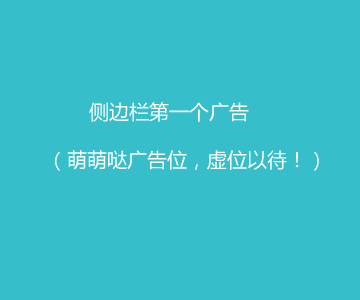UIWindow的层级问题Level
每一个IOS程序都有一个UIWindow,在我们通过模板简历工程的时候,xcode会自动帮我们生成一个window,然后让它变成keyWindow并显示出来。这一切都来的那么自然,以至于我们大部分时候都忽略了自己也是可以创建UIWindow对象。
通常在我们需要自定义UIAlertView的时候(IOS 5.0以前AlertView的背景样式等都不能换)我们可以使用UIWindow来实现(设置windowLevel为Alert级别),网上有很多例子,这里就不详细说了。
我的上一篇文章UIWindowLevel详解,中讲到了关于Windowlevel的东西,当时还只是看了看文档,知道有这么一回儿事。今天刚好遇到这块儿的问题,就顺便仔细看了一下UIWindow方面的东西,主要包括:WindowLevel以及keyWindow两个方面。
一、UIWindowLevel
我们都知道UIWindow有三个层级,分别是Normal,StatusBar,Alert。打印输出他们三个这三个层级的值我们发现从左到右依次是0,1000,2000,也就是说Normal级别是最低的,StatusBar处于中等水平,Alert级别最高。而通常我们的程序的界面都是处于Normal这个级别上的,系统顶部的状态栏应该是处于StatusBar级别,UIActionSheet和UIAlertView这些通常都是用来中断正常流程,提醒用户等操作,,因此位于Alert级别。
上一篇文章中我也提到了一个猜想,既然三个级别的值之间相差1000,而且我们细心的话查看UIWindow的头文件就会发现有一个实例变量_windowSublevel,那我们就可以定义很多中间级别的Window。例如可以自定义比系统UIAlertView级别低一点儿的window。于是写了一个小demo,通过打印发现系统的UIAlertView的级别是1996,而与此同时UIActionSheet的级别是2001,这样也验证了subLevel的确存在。
UIAlertView *alertView = [[UIAlertView alloc] initWithTitle:@"Alert View" message:@"Hello Wolrd, i‘m AlertView!!!" delegate:nil cancelButtonTitle:@"OK" otherButtonTitles:@"Cancel", nil]; [alertView show]; [alertView release]; UIActionSheet *actionSheet = [[UIActionSheet alloc] initWithTitle:@"ActionSheet" delegate:nil cancelButtonTitle:@"Cancel" destructiveButtonTitle:@"Don‘t do that!" otherButtonTitles:@"Hello Wolrd", nil]; [actionSheet showInView:self.view]; [actionSheet release];
下面是程序运行截图:
根据window显示级别优先的原则,级别高的会显示在上面,级别低的在下面,我们程序正常显示的view位于最底层,至于具体怎样获取UIAlertView和UIActionSheet的level,我会在下面第二部分keyWindow中介绍并给出相应的代码。
二、KeyWindow
什么是keyWindow,官方文档中是这样解释的"The key window is the one that is designated to receive keyboard and other non-touch related events. Only one window at a time may be the key window." 翻译过来就是说,keyWindow是指定的用来接收键盘以及非触摸类的消息,而且程序中每一个时刻只能有一个window是keyWindow。
下面我们写个简单的例子看看非keyWindow能不能接受键盘消息和触摸消息,程序中我们在view中添加一个UITextField,然后新建一个alert级别的window,然后通过makeKeyAndVisible让它变成keyWindow并显示出来。代码如下:
- (BOOL)application:(UIApplication *)application didFinishLaunchingWithOptions:(NSDictionary *)launchOptions { self.window = [[[UIWindow alloc] initWithFrame:[[UIScreen mainScreen] bounds]] autorelease]; // Override point for customization after application launch. self.viewController = [[[SvUIWindowViewController alloc] initWithNibName:@"SvUIWindowViewController" bundle:nil] autorelease]; self.window.rootViewController = self.viewController; [self.window makeKeyAndVisible]; UIWindow *window1 = [[UIWindow alloc] initWithFrame:CGRectMake(0, 80, 320, 320)]; window1.backgroundColor = [UIColor redColor]; window1.windowLevel = UIWindowLevelAlert; [window1 makeKeyAndVisible]; return YES; }
- (void)viewDidLoad { [super viewDidLoad]; // Do any additional setup after loading the view, typically from a nib. [self registerObserver]; // add a textfield UITextField *filed = [[UITextField alloc] initWithFrame:CGRectMake(0, 0, 320, 60)]; filed.placeholder = @"Input something here"; filed.clearsOnBeginEditing = YES; filed.borderStyle = UITextBorderStyleRoundedRect; [self.view addSubview:filed]; [filed release]; }
运行截图如下:
温馨提示: 本文由Jm博客推荐,转载请保留链接: https://www.jmwww.net/file/69821.html


